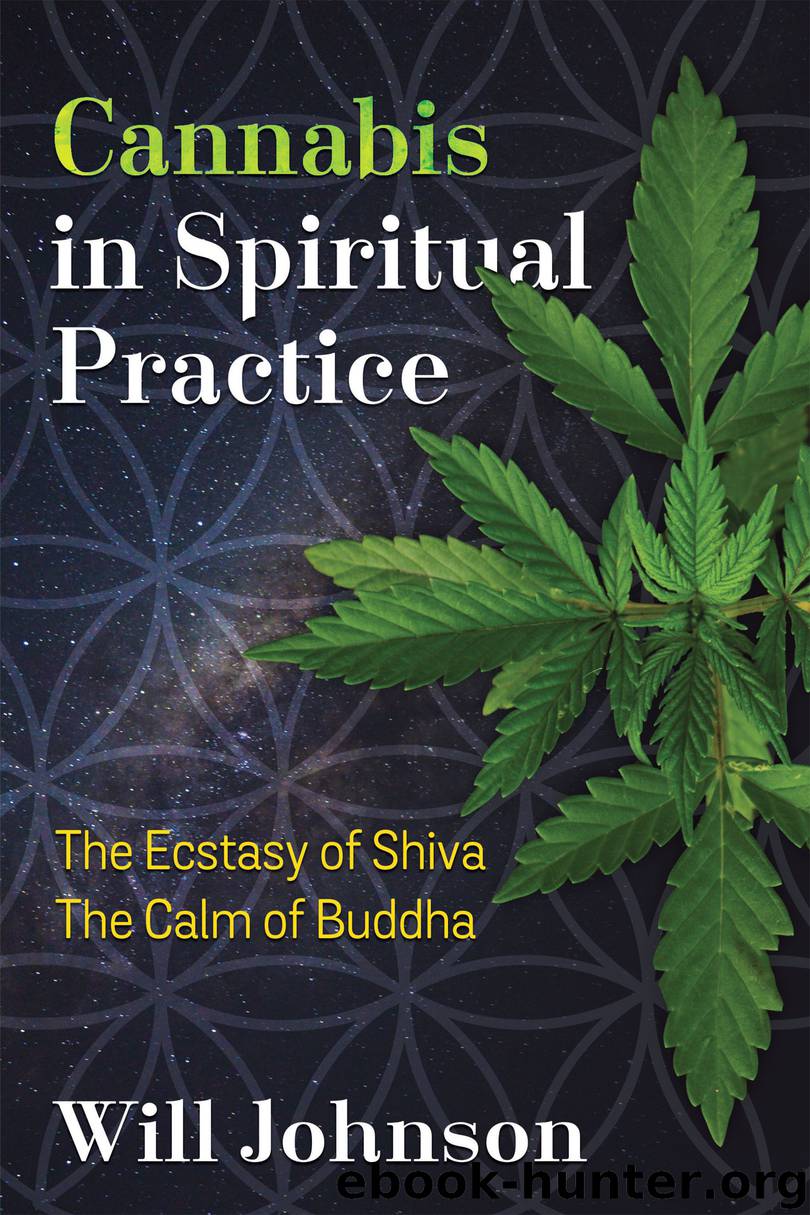Cannabis in Spiritual Practice by Will Johnson

Author:Will Johnson
Language: eng
Format: epub
Tags: Spirituality/Entheogens
Publisher: Inner Traditions/Bear & Company
Published: 2018-06-20T16:00:00+00:00
Even though Shiva’s practices are largely oriented toward dance and yoga, this does not preclude sitting meditation as a platform for the deep awakening of sensation and the surrendering to movement and breath. From a Buddhist perspective, one reason that cannabis doesn’t work so well with sitting practices—beyond the prohibition against mind-altering substances—is that sitting is primarily a posture of stability: when you sit down to meditate, you secure your place and stay there. Cannabis, on the other hand, makes the body want to move.
From the perspective of Shiva, however, sitting meditation can be entered into more as an exploration of an asana than as a more traditional practice of focusing the mind on an object of observation. Padmasana,the sitting posture, lets you explore the dynamic dance of effortless balance, the floating of the upright spine, and the dramatic liberation of sensation and energy. Padmasana introduces you to The Line, a condition of such sudden letting go through the dance of balance that a long shaft of awakened energies can be felt to pass through the length of the entire body. Padmasana is often viewed as the culminating posture of yoga, the posture through which you can open to the largest embodied wisdom. All the preliminary asanas address and melt tensions throughout the body as preparation for you now to sit down and surrender to the organic currents of the life force.
Traditionally, the Shiva yogi sits cross-legged on the ground, with spine upright and erect, buoyed up by gravity, like a strong but willowy lightning rod connecting sky and earth. Most of the preparatory asanas can be explored for only relatively short periods of time, but you can sit in padmasana for hours on end, during which time you can keep exploring and surrendering to the many natural motions—in both body and breath—that the posture can stimulate, just as you would with any other asana.
Buddhist meditation practices are often oriented toward controlling the mind through focusing on an object of observation—be it the breath, a chant, a mental image, the process of mind and body itself—and then gently bringing it back to its object as soon as you become aware that you’ve momentarily lost your focus, that your mind has wandered and you’ve gone off in thought. The practices of Shiva are less about focusing the mind than they are about surrendering to the felt current of the body. They don’t so much steer the boat down the stream, but rather they awaken the current and let go to it. In this way, sitting meditation becomes more like floating along the river of your embodied soul than an exercise in concentration.
The distinction between these two approaches to meditation becomes particularly clear with respect to both the posture of the body and the orientation toward breath. Buddhists tend to sit relatively still, but a Shiva yogi will not stay frozen in padmasana any more than she or he would when exploring the cobra pose. As he or she lets go into
Download
This site does not store any files on its server. We only index and link to content provided by other sites. Please contact the content providers to delete copyright contents if any and email us, we'll remove relevant links or contents immediately.
| Native American | Popol Vuh |
| Rastafari Movement |
The Four Agreements by Don Miguel Ruiz(6542)
Breaking Free by Rachel Jeffs(4116)
The Hatha Yoga Pradipika (Translated) by Svatmarama(3184)
120 Days of Sodom by Marquis de Sade(3117)
Member of the Family by Dianne Lake(2280)
The Tao of Physics by Fritjof Capra(2204)
The Psychedelic Gospels: The Secret History of Hallucinogens in Christianity by Jerry B. Brown(2094)
The Road to Jonestown by Jeff Guinn(1999)
Going Clear: Scientology, Hollywood, and the Prison of Belief by Lawrence Wright(1910)
Going Clear by Lawrence Wright(1892)
Uriel's Machine by Christopher Knight(1842)
The Grand Grimoire: The Red Dragon by Author Unknown(1734)
The Gnostic Gospel of St. Thomas by Tau Malachi(1712)
Key to the Sacred Pattern: The Untold Story of Rennes-le-Chateau by Henry Lincoln(1572)
The Malloreon: Book 02 - King of the Murgos by David Eddings(1532)
Waco by David Thibodeau & Leon Whiteson & Aviva Layton(1507)
The New World Order Book by Nick Redfern(1506)
The Secret of the Temple by John Michael Greer(1440)
Animal Speak by Ted Andrews(1416)
